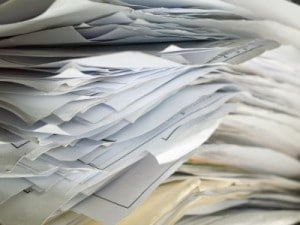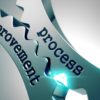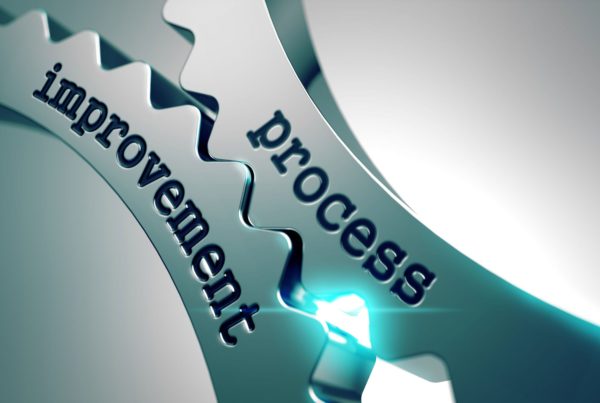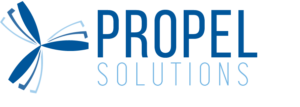By Denise Le
Printing kills your productivity and the value you provide to your customer. In the world of Lean process improvement, work we do that the customer isn’t willing to pay for is considered waste. In fact, 95 per cent of day-to-day activities in the general workplace are thought to be wasted effort. Only a mere 5 per cent is considered work that would be deemed valuable to customers. So where exactly is all of our efforts going? Waste is categorized into eight different types: Motion, Delay, Conveyance, Correction, Overprocessing, Overproduction, Inventory and Knowledge Disconnection. Printing contributes to most of these types of waste.
Printing for the sole purpose of having a hard copy is considered waste – a step that adds no value to the customer. Many people believe they work better with printed material than on the computer, but printing creates a lot of inefficiencies. Printing leads to walking to and from the printers, waiting around for printers to cooperate with us, or endlessly sifting through piles and piles of paper. It results in the most serious type of waste: Overproduction. Overproduction is the act of producing something in excess of what’s needed to meet business needs or customer demand. It’s the most serious type of waste because it’s the root cause for many types of waste, which means it’s costing you more to produce a good/service without any added benefit for your end customer.
In the case of printing, having a habit of working with hard copies has serious consequences, including longer processing times, wasted resources, equipment capacity shortages and excess inventory of documents. What’s worse, you’re putting extra effort and time into a task when it isn’t even something your customer wants.
To offer you some encouragement to break the habit of printing and improve your productivity, here are the benefits of a paper-free work routine:
- You regain lost time: Since you’re no longer walking back and forth from the printer or rummaging through piles of paper or folders, you’re able to accomplish more in your work day.
- You become more organized and focused: Working with digital files forces you to be more cognizant of how you store things. And with no piles of paper in sight, a cleaner desk makes for a clearer mind.
- You streamline your processes: Printing disrupts your workflow. Most likely when you work with a hard copy you need to find a way to transfer it to your computer. Working with soft copies reduces the number of steps in your processes and shortens your lead times, allowing to you float seamlessly from one task to the next.
- You create more office space: Filing hard copies “just in case” takes up space that can be used for something else. Digital files are faster to search for and can be made easily accessible to everyone.
- You reduce operating expenses: Less printing means you’re using up less office equipment and supplies. Completing the same tasks while using less resources displays your efficiency!
The next time you find yourself wanting to use the printer, think about whether or not you really need to use it. Reducing the amount of work you print will result in significant, positive changes to your productivity and minimize the amount of waste you produce in your processes.
Let me know how reducing the number of hard copies you print has helped your productivity by leaving a comment below.








